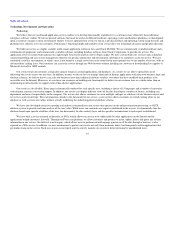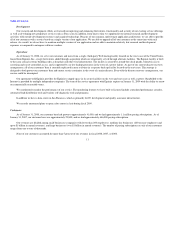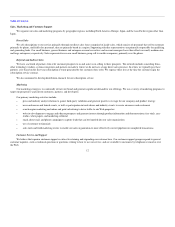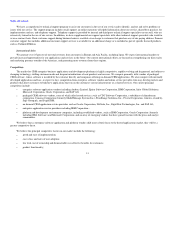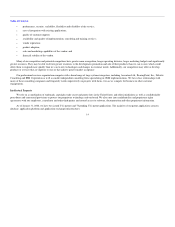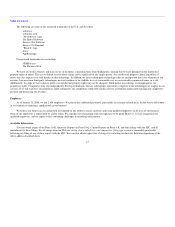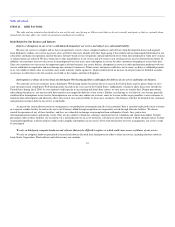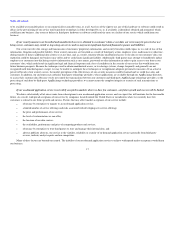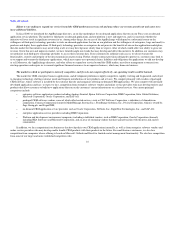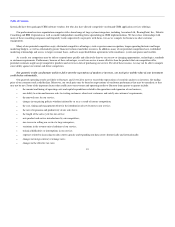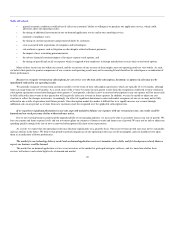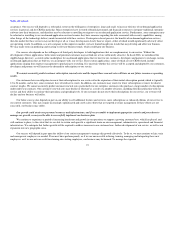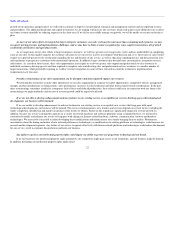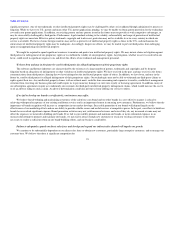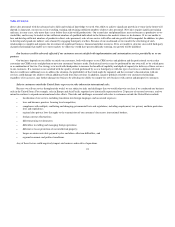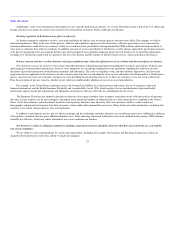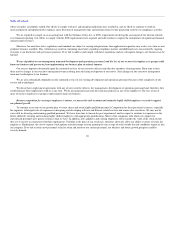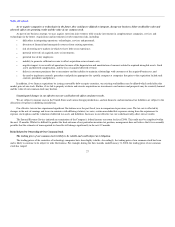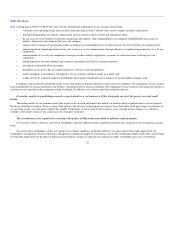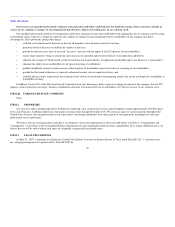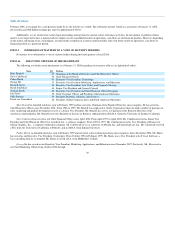Salesforce.com 2007 Annual Report Download - page 23
Download and view the complete annual report
Please find page 23 of the 2007 Salesforce.com annual report below. You can navigate through the pages in the report by either clicking on the pages listed below, or by using the keyword search tool below to find specific information within the annual report.
Table of Contents
• general economic conditions could adversely affect our customers' ability or willingness to purchase our application service, which could
adversely affect our operating results;
• the timing of additional investments in our on-demand application service and in our consulting service;
• regulatory compliance costs;
• the timing of customer payments and payment defaults by customers;
• costs associated with acquisitions of companies and technologies;
• extraordinary expenses such as litigation or other dispute-related settlement payments;
• the impact of new accounting pronouncements;
• the adverse financial statement impact of having to expense stock options; and
• the timing of payroll and social tax expense which is triggered when employees in foreign jurisdictions exercise their vested stock options.
Many of these factors are not within our control, and the occurrence of one or more of them might cause our operating results to vary widely. As such,
we believe that quarter-to-quarter comparisons of our revenues and operating results may not be meaningful and should not be relied upon as an indication of
future performance.
Because we recognize revenue from subscriptions for our service over the term of the subscription, downturns or upturns in sales may not be
immediately reflected in our operating results.
We generally recognize revenue from customers ratably over the terms of their subscription agreements, which are typically 12 to 24 months, although
terms can range from one to 60 months. As a result, most of the revenue we report in each quarter results from the recognition of deferred revenue relating to
subscription agreements entered into during previous quarters. Consequently, a decline in new or renewed subscriptions in any one quarter will not necessarily
be fully reflected in the revenue in that quarter but will negatively affect our revenue in future quarters. In addition, we may be unable to adjust our cost
structure to reflect the changes in revenues. Accordingly, the effect of significant downturns in sales and market acceptance of our service may not be fully
reflected in our results of operations until future periods. Our subscription model also makes it difficult for us to rapidly increase our revenue through
additional sales in any period, as revenue from new customers must be recognized over the applicable subscription term.
If we experience significant fluctuations in our rate of growth and fail to balance our expenses with our revenue forecasts, our results could be
harmed and our stock price may decline without advance notice.
Due to our evolving business model and the unpredictability of our emerging industry, we may not be able to accurately forecast our rate of growth. We
base our current and future expense levels and our investment plans on estimates of future revenue and future rate of growth. We may not be able to adjust our
spending quickly enough if the rate of new or renewed subscriptions falls short of our expectations.
As a result, we expect that our operating results may fluctuate significantly on a quarterly basis. Our recent revenue growth rates may not be sustainable
and may decline in the future. We believe that period-to-period comparisons of our operating results may not be meaningful, and you should not rely upon
them as an indication of future performance.
The market for our technology delivery model and on-demand application services is immature and volatile, and if it develops more slowly than we
expect, our business could be harmed.
The market for on-demand application services is not as mature as the market for packaged enterprise software, and it is uncertain whether these
services will achieve and sustain high levels of demand and market
20


